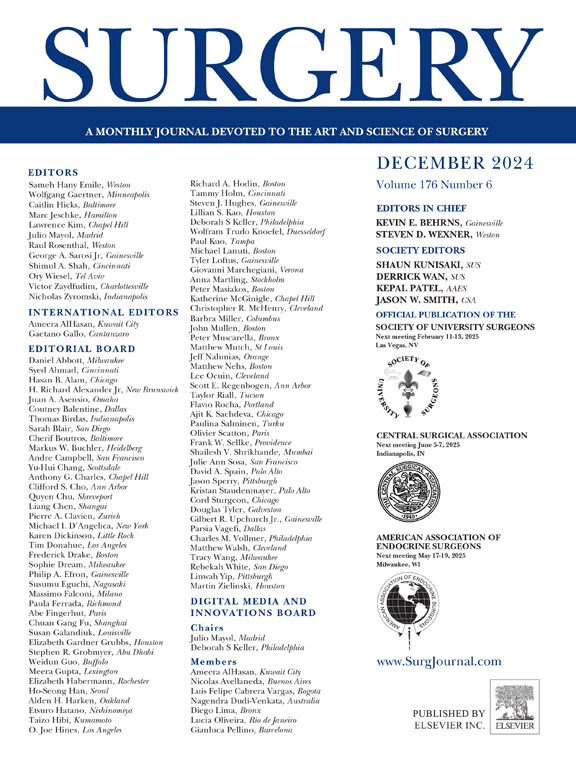Beta-catenin/sirtuin 1/farnesoid X receptor pathway promotion of portal vein ligation and parenchymal transection-induced rapid liver regeneration
IF 3.2
2区 医学
Q1 SURGERY
引用次数: 0
Abstract
Background
By accelerating the regeneration of the future liver remnant, portal vein ligation and parenchymal transection allows for more extensive hepatectomy. Given that the mechanism remains poorly understood, the aim of this study was to investigate the mechanism of portal vein ligation and parenchymal transection–induced liver regeneration.
Methods
A portal vein ligation and parenchymal transection–induced liver regeneration mouse model was established, followed by RNA microarray analysis to identify candidate molecules. Genomic deletion and chemical manipulation of target molecules were used to explore their functions in portal vein ligation and parenchymal transection–induced liver regeneration. Validation was conducted using a diseased liver model and human samples.
Results
Portal vein ligation and parenchymal transection–induced liver regeneration was significantly accelerated compared with that in sham-operated mice (P < .05). An RNA microarray revealed that Sirtuin 1 is a crucial molecule in the proliferation of the future liver remnant. Regardless of whether Sirtuin 1 is inhibited chemically or through genetic deletion, portal vein ligation and parenchymal transection-induced liver regeneration is distinctly attenuated. Further investigation revealed that Sirtuin 1 promoted portal vein ligation and parenchymal transection–induced liver regeneration via the farnesoid X receptor. In addition, beta-catenin also was found to participate in the process of future liver remnant proliferation. Chemical inhibition of beta-catenin markedly impaired but activation of WNT/beta-catenin mildly enhanced portal vein ligation and parenchymal transection–induced liver regeneration (P < .05). Deletion of Sirtuin 1 blocked the facilitating effect of beta-catenin on portal vein ligation and parenchymal transection–induced liver regeneration. These findings were validated in diseased liver models and patient samples, confirming the correlation between the beta-catenin/Sirtuin 1/farnesoid X receptor pathway and portal vein ligation and parenchymal transection-induced liver regeneration.
Conclusion
Activation of the beta-catenin/Sirtuin 1/farnesoid X receptor pathway offers critical mechanistic insights into accelerating portal vein ligation and parenchymal transection-induced liver regeneration. Modulation of beta-catenin/Sirtuin 1/farnesoid X receptor may therefore improve clinical outcomes in patients receiving staged hepatectomy.

求助全文
约1分钟内获得全文
求助全文
来源期刊

Surgery
医学-外科
CiteScore
5.40
自引率
5.30%
发文量
687
审稿时长
64 days
期刊介绍:
For 66 years, Surgery has published practical, authoritative information about procedures, clinical advances, and major trends shaping general surgery. Each issue features original scientific contributions and clinical reports. Peer-reviewed articles cover topics in oncology, trauma, gastrointestinal, vascular, and transplantation surgery. The journal also publishes papers from the meetings of its sponsoring societies, the Society of University Surgeons, the Central Surgical Association, and the American Association of Endocrine Surgeons.
 求助内容:
求助内容: 应助结果提醒方式:
应助结果提醒方式:


